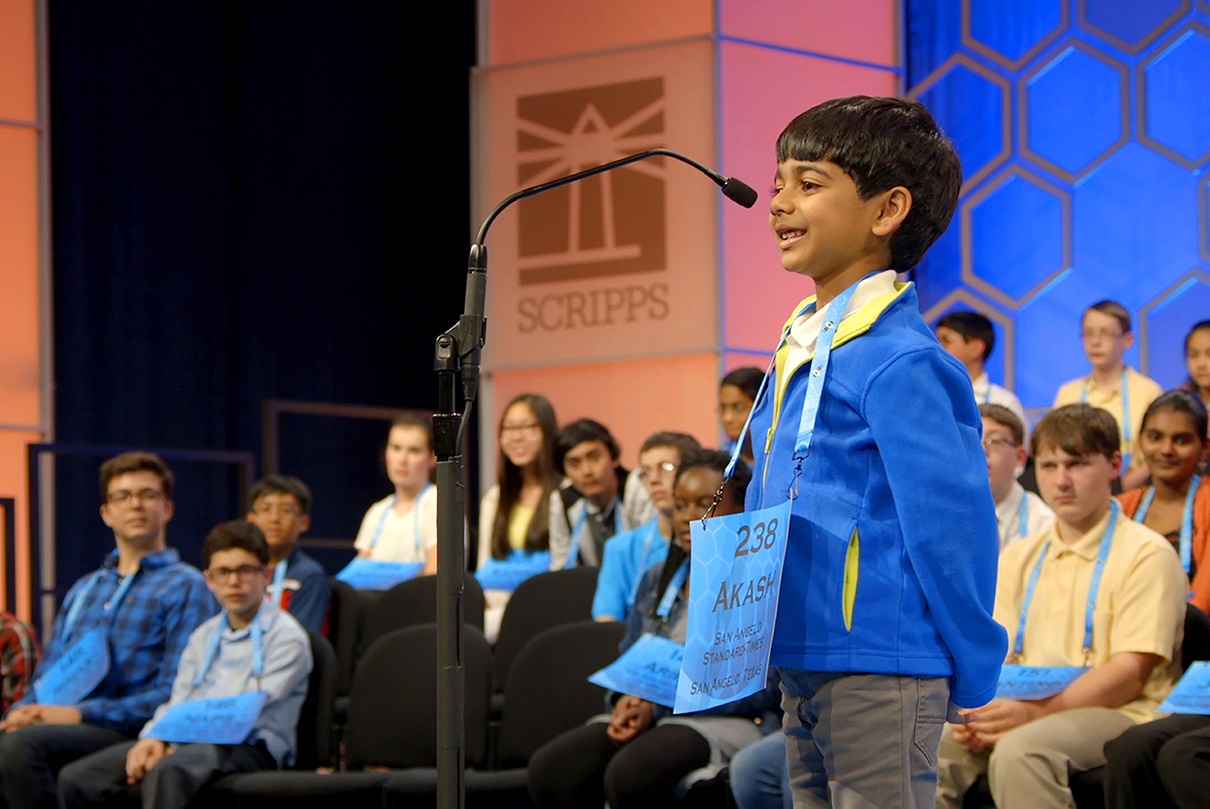Film Review:
Spelling the Dream

Documentarian Sam Rega’s latest asks why so many Indian-American kids keep winning the Scripps National Spelling Bee, and then discovers answers that are pretty much exactly what you’d think.
But that’s okay, because along the way we focus upon four young hopefuls, and they’re a fascinating, funny bunch as they talk about their hopes and dreams, while tackling all manner of terrifyingly long and bizarre words.
Straight away we’re told that, for 12 years in a row, the winners of the Bee have been Indian-American, and that, in the competition’s 31-year history, 26 of them have been Indian-American too. And then there were 2019’s ‘octo-champs’, eight joint winners of whom seven were Indian-American, so are Indian-American kids genetically-disposed to be great spellers, as an unnamed woman patronisingly ponders in an early bit of footage? Or is the truth more complex than that?
Talking-head-type interview subjects (a few too many of whom are men, it must be said) contemplate the facts, and they’re the expected selection of former winners, authors, journalists and academics, plus Hari Kondabolu, a comedian. And then there are the kids, and they’re a memorable quartet.
Akash is only seven but he’s already a master of spelling and other disciplines, and he gesticulates like a hip-hop singer while enthusiastically spelling formidable words. Ashrita isn’t quite as precocious, but she does hoot with glee after successfully spelling ‘supercalifragilisticexpialidocious’ for her friends, and then there’s the methodical, somewhat superstitious Tejas, who takes everything very seriously.
Shourav is, in some ways, the star here, simply because he’s so cool and even cocky, and his friends call him the “Michael Jordan of spelling”. Seeing him overly quickly spelling words that would stump most adults makes you rather worry for him at the 2017 competition, as the rounds go by and the kids must spell terms that you would never find outside a highly-specialised science journal.
But why is it that Indian-Americans dominate? It’s true that all these kids are highly intelligent (little Akash obviously has a photographic memory), but there’s more than that at play here, as the parents of each have evidently worked long and hard behind-the-scenes with their offspring, and the added element of multilingualism allows the child to see intricate patterns in words that mere monolinguists simply don’t.
It’s also hard not to be enraged at the racism these young people must endure, as online trolls mock them and nastily question their Americanness, and we briefly delve into representations of Indian people in US popular culture (meaning, of course, a glimpse of Apu in The Simpsons). Given what’s going on in the States right now, these moments have extra, infuriating sting.
Yes, all in all, director/co-writer/co-producer/editor/co-camera operator Rega’s doco is positively spellbinding (sorry!).